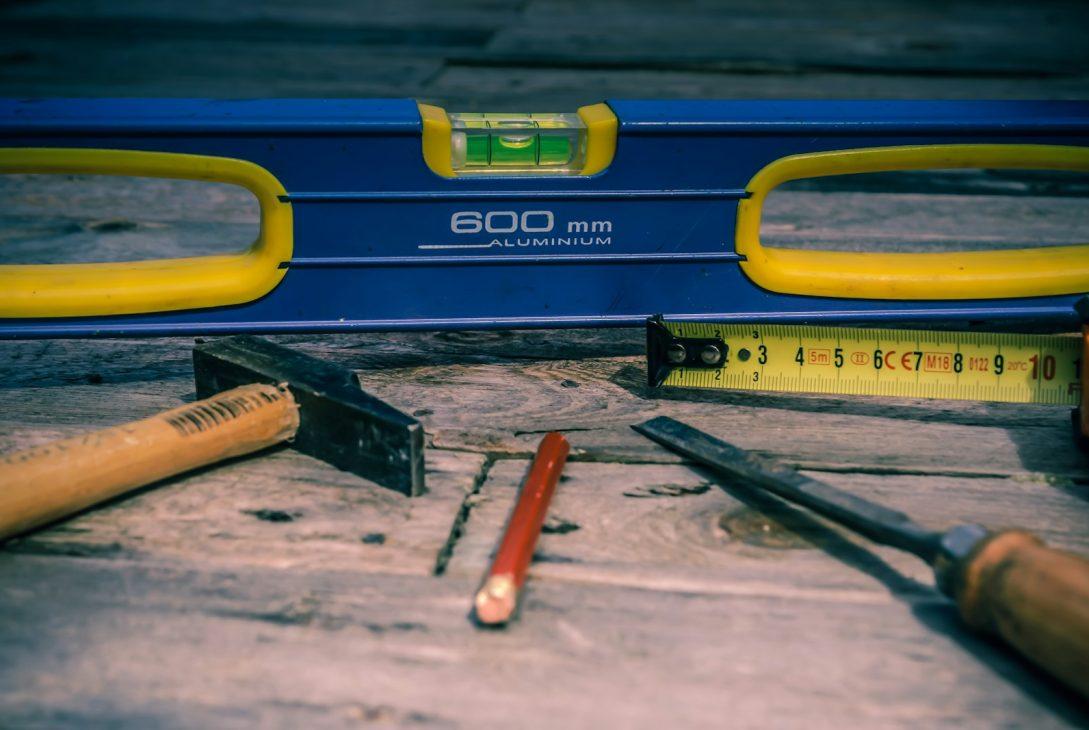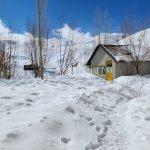Winter maintenance projects separate smart homeowners from those facing emergency repairs. Taking action now prevents thousands in damage when temperatures plummet. Most winterization tasks don’t require professional contractors. This guide covers essential projects you can tackle yourself this fall.
Why Timing Matters for Home Maintenance
Your home needs preparation before cold weather arrives. Delaying projects until December creates emergencies. Emergency contractors charge 50% premiums for rush jobs. Planning ahead gives you time, money, and flexibility.
Fall weather makes outdoor work comfortable and safe. Spring brings mud. Summer brings heat and insects. Autumn offers perfect conditions for climbing ladders and working outside. Use this window wisely before winter closes it.
Preventive maintenance beats emergency repairs every single time. A $200 gutter cleaning prevents $5,000 in water damage. Simple caulking stops drafts that cost hundreds in heating bills. Small investments now save enormous expenses later.
Protecting Pipes and Water Systems
Frozen pipes burst without warning and cause catastrophic damage. Water expands when it freezes, creating pressure inside metal and plastic lines. The damage often goes unnoticed until walls show stains or mold appears months later.
Freeze protection starts with identifying vulnerable areas on your property. Walk around your home with a notebook. Mark every outdoor water connection you find. Check under decks and porches where lines might hide.
Drain exterior faucets before the first freeze arrives. Turn off water to outdoor spigots from inside your home. Open faucets to let remaining water drain completely. This simple task takes fifteen minutes per faucet.
Insulate exposed pipes with foam sleeves from any hardware store. These cost five dollars per pipe and prevent expensive damage. Wrap pipes that run along exterior walls. Cover any lines visible in crawl spaces or unheated basements.
Garden hoses should come off faucets and be stored inside. Water left in hoses freezes and expands. This expansion damages both the hose and the connection. Drain hoses completely before putting them away for winter.
Sealing and Weatherproofing
Air leaks waste heating energy and cost money monthly. Find gaps around windows, doors, and corners. Feel for drafts by holding your hand near suspected areas. Cold air moves fast enough to feel even in mild weather.
Caulk gaps around windows and door frames with quality silicone caulk. The material costs two dollars per tube. Application takes an hour for a typical home. Results include lower heating bills and increased comfort immediately.
Weatherstripping around doors prevents drafts and moisture. Most hardware stores stock various profiles and materials. Measure your doors accurately before shopping. Installation takes minutes with just a utility knife and scissors.
Foundation cracks need attention before freezing temperatures arrive. Water infiltrates cracks and expands as it freezes. This cycle repeats daily during winter, widening cracks. Seal foundation cracks with concrete caulk or hydraulic cement.
Check attic ventilation to prevent ice dam formation. Ice dams occur when snow melts on warm roof areas. Water runs down and refreezes at cold edges, creating dangerous ice. Proper ventilation keeps roof surfaces uniformly cold.
Exterior Preparation and Storage
Outdoor spaces need winterization before frost arrives. Remove and store learn more about protecting anything exposed to freeze-thaw cycles. Temperature swings damage wood, metal, and fabric through repeated expansion and contraction.
Move outdoor furniture indoors if you have storage space. If storage isn’t available, cover everything with weatherproof tarps. Proper covering prevents moisture absorption. Leave air gaps under tarps for ventilation.
Drain all outdoor water features completely before freezing starts. Fountains, bird baths, and decorative pools contain standing water. Ice expansion cracks containers and destroys pumps. Empty systems completely to prevent expensive damage.
Mulch garden beds to insulate soil and protect roots. Add extra layers around perennials that might struggle in your climate. Remove annual plants that won’t survive freezing. Wrap vulnerable shrubs and trees with protective burlap.
Clean gutters and downspouts thoroughly before winter arrives. Debris blocks water drainage and creates ice dams. Clogged gutters weigh down from ice accumulation. Heavy ice pulls gutters away from fascia. Cleaning takes a few hours and prevents major damage.
Interior Preparations and Details
Small touches around your home make big differences during winter. Weatherstripping on interior doors reduces drafts between rooms. Insulation around basement rim joists prevents cold air infiltration. These projects cost little but provide measurable benefits.
Attic insulation reduces heating costs throughout winter. Check insulation levels in your attic carefully. Most older homes lack sufficient insulation by modern standards. Adding insulation increases comfort and cuts heating bills noticeably.
Water heater maintenance improves efficiency and extends equipment life. Drain sediment from your water heater annually. This simple task takes thirty minutes. Sediment buildup reduces efficiency and causes premature failure.
Check chimney caps and roof penetrations for gaps. Gaps around vents and chimneys allow cold air inside. Small gaps let water infiltrate during rain and snow melt. Seal these areas with roofing cement or flashing repairs.
Inspect basement walls for cracks or seepage signs. Water entering your basement during freeze-thaw cycles causes structural damage. Seal cracks before winter weather arrives. Proper drainage around your foundation prevents water infiltration completely.
Personal Touches and Style Maintenance
Your home’s details matter during long winter months. Small decorative items deserve care and attention. Gold earrings stud quality stands out when properly maintained. The same principle applies to your home and its furnishings.
Clean light fixtures and windows thoroughly. Clear glass and bright lights improve mood during dark winter months. Dirt reduces natural light penetration. Clean fixtures increase brightness without added electricity costs.
Polish and protect wood surfaces in your home. Dry winter air draws moisture from wood furnishings. Proper maintenance prevents cracking and maintains beauty. A little preventive care preserves your investment.
Update any worn door hardware or locks. Cold weather stresses door mechanisms. Proper maintenance ensures doors work smoothly all winter. Frozen locks create safety hazards and frustration.
Refresh caulk around bathroom fixtures and tubs. Winter humidity fluctuations create stress on existing caulk. Cracks in caulk allow water infiltration behind walls. Replacing caulk prevents hidden mold and structural damage.
Energy Efficiency Projects
Lower heating costs through strategic improvements. Programmable thermostats maintain comfortable temperatures automatically. They reduce energy waste from manual adjustment. Installation takes less than an hour for most homeowners.
Insulate water heater pipes to reduce heat loss. Hot water traveling through uninsulated pipes loses heat. Pipe insulation costs five dollars per pipe. The investment pays back through lower utility bills within months.
Seal electrical outlets on exterior walls. Gaps around outlets let cold air directly into your home. Outlet gaskets seal these openings inexpensively. Installation requires turning off power and takes five minutes per outlet.
Install window quilts or thermal curtains for added insulation. Heavy curtains reduce heat loss through glass. Close curtains at night to maintain warmth. The improvement is noticeable on particularly cold nights.
Project Planning Timeline
Start winterization projects in late August or early September. This timing gives you weeks before serious cold arrives. September weather is still pleasant for outdoor work. October provides a final push for remaining tasks.
Create a prioritized list based on your property’s specific needs. Address water line protection first since that prevents catastrophic damage. Work on exterior sealing and weatherproofing next. Interior improvements can happen throughout fall and winter.
Weekends provide ideal times for most projects. Dedicate two to three weekends for comprehensive winterization. This schedule completes everything before December arrives. Breaking projects into manageable chunks makes the work less overwhelming.
Budget properly for materials and equipment. Most winterization costs fall between $500 and $1,500 depending on home size. This investment prevents damage costs often exceeding $10,000. The payback is immediate through avoided repairs.
Conclusion
Winter preparation through DIY projects saves money and prevents emergencies. Drain pipes, seal gaps, clean gutters, and weatherstrip doors before cold weather. These projects are manageable for most homeowners with basic tools.
Start your winterization plan today and work through fall systematically. Your home will thank you when temperatures drop and weather turns harsh. Enjoy a warm, comfortable winter knowing you’ve prepared properly.













